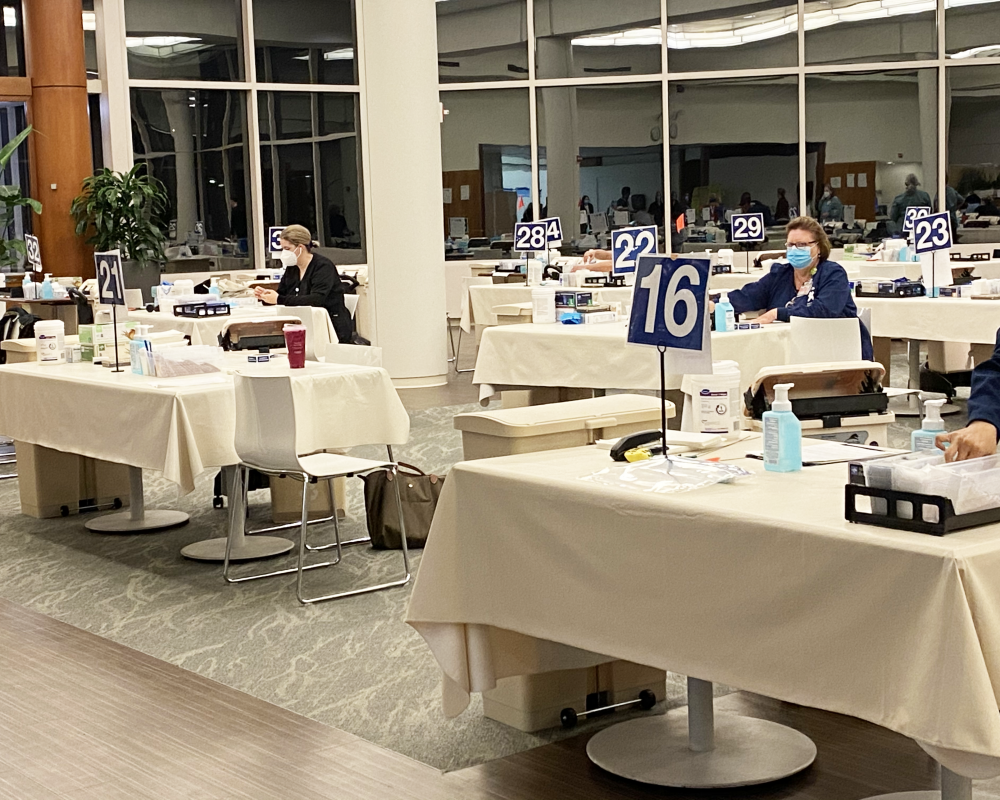Public Health Depts. across the country are relying on Medical Reserve Corps (MRC) to help with the logistics of mass vaccination clinics.
MRC Units were widely established after 9/11; today the approximate 800-900 units encompass about 200,000 volunteers spread across the states. The Medical Reserve Corps (MRC) is a network of community-based units established to meet the public health needs of communities. The MRC consists of medical and non-medical volunteers who contribute to local health initiatives.
I recently signed up as a volunteer with the Virginia Medical Reserve Corps. I will confess my initial interest in volunteering was triggered by my desire to become vaccinated against COVID-19. I had heard that if you volunteer in a vaccination clinic, that if there were leftover doses, you could receive one. And indeed, after my first day of volunteering, that did occur.
But I’d have to say, my real payback was in the experience. My first weekend was in “flow control” where I helped the 5,400 people, scheduled in 15-minute increments to be vaccinated, line up in orderly fashion. The hope in the air among this crowd was palpable. Almost everyone had a smile on their face; one gentleman broke out into song, “. . . It’s a beautiful morning, it’s a beautiful day” while his wife tried to hush him. A few were nervous; all seemed grateful it was finally “their day.” Some were emotional, seeing an end, I imagine, to what was a very bleak winter.
The other feature of that day that struck me was the diversity of the crowd. I saw people in line from every continent, and from many, many countries. When you are immersed in that level of diversity, you begin to see not the differences but the commonalities: the people hoping to return to life as they once knew it, the adult son or daughter caring for an elderly parent or grandparent who was being vaccinated, the couples holding hands as they waited in line, the young adults with pre-existing conditions finally breathing a sigh of relief.
In the second clinic I worked in, I was the “hand sanitizer” dispenser. Again, the same level of diversity was hammered home. After all, I spent all 11 hours of my shift looking at 3,000 pairs of hands. I saw hands with yellow calluses, delicately shaped hands with the long beautiful fingers of a pianist, small child-like hands, older hands cracked by too much sanitizer, dark hands, light hands, tan hands. All these hands, seen in isolation, were so beautiful – again, immersed in their diversity, I could see their potential, their power, their creativity, their history of hard work.
So what does this have to do with transportation? I think it helps me imagine the experience of volunteer drivers—something I hope to do someday. They too serve a diversity of people – perhaps not quite as diverse as the crowds I saw, but certainly with the same level of humanity and need. What drives me to continue volunteering, and probably is a motivation common to most volunteers, is the real feeling of being connected to community, being part of something bigger than myself. I hope you too are able to experience this in your community – and get a chance to be vaccinated real soon.
Be safe and stay well.


